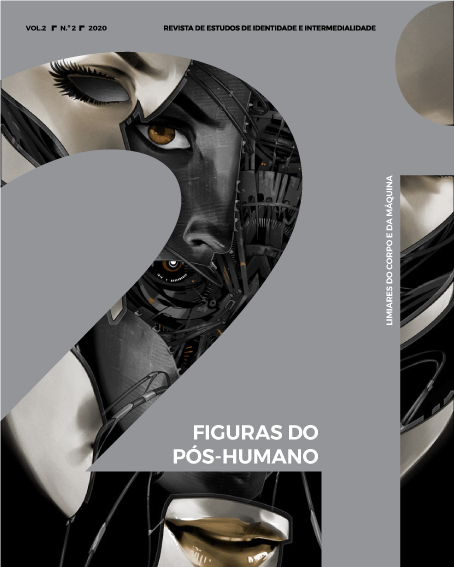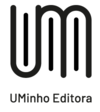Rio de Janeiro, apocalyptic and posthuman metropolis
A reading of Rubem Fonseca’s short story “o quarto selo (fragmento)”
DOI:
https://doi.org/10.21814/2i.2660Keywords:
spatiality; metropolis; apocalypse; post-human; Rubem Fonseca.Abstract
In an interdisciplinary approach, in which the theory of literature and space science intervene, this article examines the representation of Rio de Janeiro in Rubem Fonseca’s short story “O quarto selo (fragmento)”. Set in an indeterminate future, the tale uses the technique of cinematographic plans to describe a new urban reality, in which the spaces of late modernity are replaced by a metropolis formed by peripheries. At a time when bodies, machines and cities are mutually constitutive, the presence of the cyborg character alludes to the dissemination of hybrid identities in the context of a posthuman geography. The protagonist of the story is precisely an artificial creation, endowed with multiple identities, in the ordered and managed world of Rio de Janeiro understood as an apocalyptic metropolis. The apocalypse, to which the title of the story refers, must be understood as a device that projects a catastrophic scenario in the immediate reality, allowing questions of a social and political order to be thought and discussed.
Downloads
References
Abreu, M. de. (2006). Evolução urbana do Rio de Janeiro (4ª ed.). Rio de Janeiro: IPP.
Bakhtin, M. (1998). Questões de literatura e de estética: a teoria do romance (4ª ed.). São Paulo: UNESP.
Baudrillard, J. (2000). The Vital illusion. New York: Columbia University Press.
Beugmann, R. (2005). Sprawl: a compact history. Chicago: Chicago University Press.
Brosseau, M. (1996). Des romans-géographes. Paris: L’Harmattan.
Claval, P. (2007). Geografia cultural (3ª ed.). Florianópolis: Editora da UFSC.
Duncan, J. S., Johnson, N. C., & Schein, R. H. (Eds.) (2004). A companion to cultural geography. Oxford: Blackwell Publising.
Fonseca, R. (1985). Bufo & Spallanzani. Rio de Janeiro: Francisco Alves.
Fonseca, R. (2004). Contos reunidos (7ª reimp.). São Paulo: Companhia das Letras,
Foucault, M. (2004). Vigiar e punir (29ª ed.). Petrópolis: Editora Vozes.
Haraway, D. (2009). Manifesto ciborgue: Ciência, tecnologia e feminismo-socialista no final do século XX. In: Haraway, D.; Kunzru, H.; Tadeu, T (Eds.). Antropologia do ciborgue: as vertigens do pós-humano. Belo Horizonte: Autêntica Editora.
Jameson, F. (1997). Pós-modernismo: a lógica cultural do capitalismo tardio (2ª ed.). São Paulo: Editora Ática.
Kermode, F. (2000). The sense of an ending: Studies in the theory of fiction with a new epilogue. Oxford: Oxford University Press.
Lehan, R. (1998) The city in literature: An intellectual and cultural history. Berkeley: University of California Press.
Lyotard, J.-F (1998). A condição pós-moderna (5ª ed). Rio de Janeiro: José Olympio.
Mazurek, M. (2014). A sense of apocalypse: Technology, textuality, identity. Frankfurt am Main: Peter Lang.
McHale, B. (1987). Postmodernist fiction. New York & London: Methuen.
Moretti, F. (2003). Atlas do romance europeu: 1800-1900. São Paulo: Boitempo Editorial.
Santos, M. (1990). Metrópole corporativa fragmentada: o caso de São Paulo. São Paulo: Hucitec.
Soja, E. W. (1993). Geografias pós-modernas: a reafirmação do espaço na teoria social crítica. Rio de Janeiro: Jorge Zahar Ed.
______ (1996). Thirdspace: Journeys to Los Angeles and other real and imagined places. Cambridge & Oxford, Blackwell Publishers.
______ (2000). Postmetropolis: Critical studies of cities and regions. Malden & Oxford: Blackwell Publishing.
Tally Jr., R. (2013). Spatiality. London & New York: Routledge.
Westphal, B. (2007). La Géocritique: Réel, fiction, espace. Paris: Éditions de Minuit.
Downloads
Published
Versions
- 2020-12-03 (3)
- 2021-05-04 (2)
- 2021-05-04 (1)
How to Cite
Issue
Section
License
Copyright (c) 2020 Paulo Teixeira

This work is licensed under a Creative Commons Attribution-NonCommercial 4.0 International License.


.jpg)










